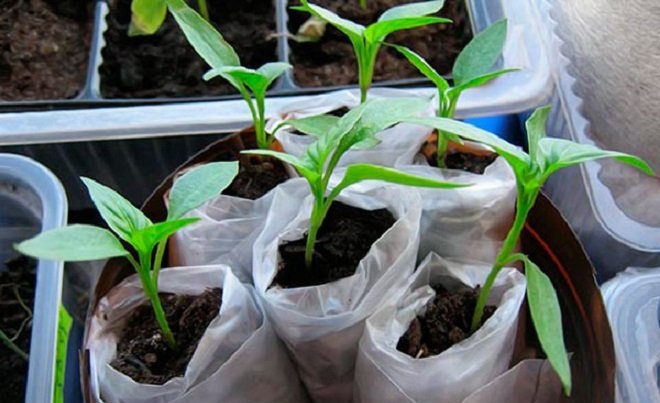 Growing peppers is a simple process that brings great pleasure. It all starts with the selection of the variety, then its preliminary processing and preparation is carried out, then the turn of the land comes.
Growing peppers is a simple process that brings great pleasure. It all starts with the selection of the variety, then its preliminary processing and preparation is carried out, then the turn of the land comes.
But, many gardeners are moving away from the "standard" methods of growing, and are trying new ways of germinating seeds. One of these is growing pepper seedlings in diapers. Let's talk about it in more detail.
Content
What kind of method?
Diapers (or snails) are not such a popular method of growing seedlings. But, he has a lot of positive sides, which can greatly simplify the main task - to grow high-quality and large crops.
Benefits
This method is suitable for both experienced summer residents and beginners, because it does not require any serious preparation, the use of special devices, etc. The main advantages of the "diaper" method: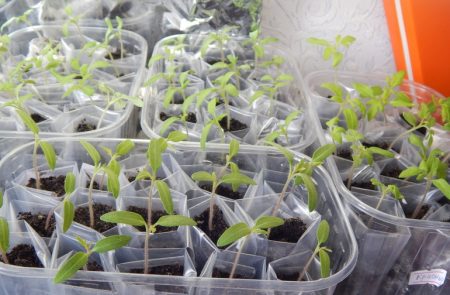
- Save space. From one diaper with a diameter of 40 cm, you can get about 200 or more peppers;
- The ability to tightly control the whole process "from and to", freeing seedlings from weak plants;
- Pepper seedlings practically do not stretch;
- You can visually monitor the level of humidity, which will protect the plant from disease;
- Diving work is also greatly simplified. The diaper needs to be simply expanded, and then a ripened plant is taken out;
- The root system is not damaged during transplantation, since it does not need to be "released" from the soil;
- The cost of materials is reduced, as well as the possibility of reusing seeds.
The main minus (possible) is the stretching of plants, which is rare, and even that is due to improper care. Especially if the seedlings received little light, and the earth was not moistened sufficiently.
Rules for growing seedlings
As with other crops, seeds must be prepared before planting seedlings. They need to be sorted out, discarded empty with spoiled "for a couple", small, and all that have the wrong color and damage.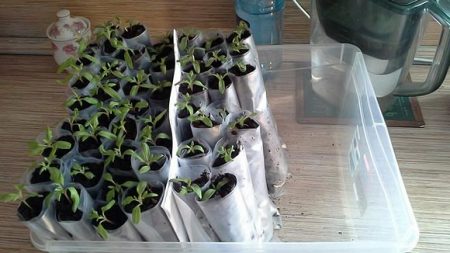
Now you can start the procedures that will seriously increase the germination of the plant:
- Soak. Stimulates seeds for fast growth. So, they need to be laid out on cheesecloth, wrapped, and then placed in a previously prepared container with heated water.
- Then you should wait until the liquid cools down (for better hardening of the seeds), and add warm again. And so alternate for 2-3 days;
- Soaking with fertilizers. Useful micronutrients also affect the future harvest. The most commonly used solution is potassium permanganate and wood ash. How to prepare a solution?
- Dissolve 1 g of ash and 1 g of potassium permanganate in 100 ml. water, and soak the seeds in it for half an hour;
- So that plants receive a sufficient amount of light, you can use special ultraviolet lamps, which are sold in specialized stores;
- Disinfection. It is used as a “vaccine” against diseases. Most often, a solution based on garlic is used for these purposes. It is prepared as follows: 40 g of chopped garlic is diluted with 200 ml. water, and then the seeds are lowered into this solution for 1 hour. Then they need to be washed with water.
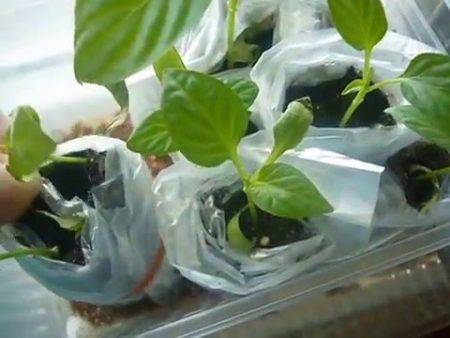
Now consider the technology itself, and its various variations.
In diapers with soil
The procedure is divided into the following steps:
- Polyethylene is taken. Approximately 25 by 30 cm. As an alternative, you can use packages from purchases from stores;
- For the part of polyethylene (the longest), where the sheet plates will be, the edges of the package need to be folded down by 2-3 cm. (This is not necessary, but we will need a “supply” later to deploy this part later and add some more soil );
- Now on the side you need to measure 2-3 cm, and pour a little moistened earth (about 2 tbsp. L.) Into the diaper, and slightly compact it;
- Using tweezers, take the planting material together with a piece of paper moistened with water, on which the seeds were germinated, and put it on the soil;
- It is necessary to fill the seedlings with earth. Remember the roots! Germinating in diapers, the first roots appear twice as fast as when germinated by the usual method. But, to cut off such roots is not necessary.
- Next, the diaper is rolled up, and its edge is slightly bent. That is, we need to form a certain narrow "glass" with seedlings;
- Then the plantings need to be fixed. For these purposes, you can take an ordinary gum or thread;
- The lower part of the diaper is pierced with a sharp awl, which is necessary to remove excess moisture;
- Rolls need to be put in plastic glasses, or use a large container - they will play the role of a pallet;
- For each grade, it is worth taking a separate container - it will be easier not to get confused, and mark the seedlings. If there is not much pepper, then the marking can be put directly on the diaper;
- As we already wrote, the ground should be moist, and the first 2-3 days after planting the peppers should not be watered. For this period of planting it is better to clean in a well-lit place. Do not put on the windowsill to avoid direct sunlight and drafts;
- As soon as the plants get stronger and grow a little, you need to top up the soil. To expand the diaper, however, is not worth it;
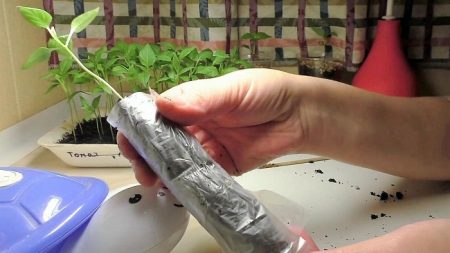
Done! Now pepper seedlings can be removed to a permanent place of storage, from time to time to top up the soil until the moment of planting in an open area in the garden.
In Moscow
Another good method of "non-standard" growing peppers. We need to prepare: a marker, plastic glasses, a film of polyethylene, toilet paper and, of course, the seeds themselves.
The width of the film should be about 10 cm. Rolls are cut to the required length (the best option is 45 cm), in strips. Then, toilet paper in one layer is laid out on them.
Seeds are laid out uniformly along the entire length of the roll, at a distance of about 5 cm from each other, from the edge - about 2 cm. The easiest way to perform this procedure is with tweezers. Now the seedlings are covered with a film of a similar width.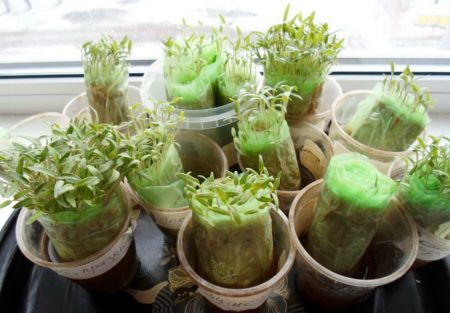
The resulting "farm" should be rolled up, and then secured with thread or rubber bands. You can do the marking. Then the rolls, as in the previous version, are sent to glasses, and filled with water 3-4 cm.
Glasses need to be covered with film or simply put in bags (if you do not use special containers with lids), and make small holes for ventilation.
After the first seedlings appear, you need to add all the necessary fertilizers to the soil. But, their number should be 2 times less than the "usual". In this case, humic fertilizers are most optimal.
It is necessary to constantly monitor the level of liquid in containers, and systematically add it. Re seedlings need to be fed immediately after the growth of the first more or less "strong" leaf plates.
When the seedlings grow to a normal size, they can be prepared for transplantation into open ground. In our case with pepper, they can be dived after the appearance of one leaf.
Each plant must be carefully cut with paper so as not to harm the roots.Seeds that are still growing are sent for ripening back into the glass, and are determined in their former place. Each seedling can be dived with paper. After transplanting, the plant should be watered abundantly.
Using substrate
The most popular option is a coconut based substrate. It is widely used due to its unique properties. Here are just a few of them: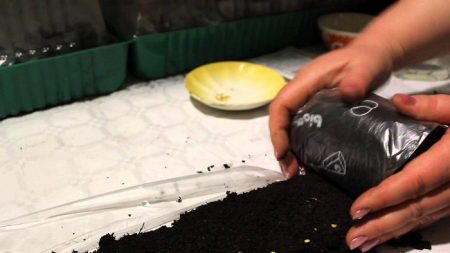
- Absolutely safe organic product;
- It can absorb, hold, and give off moisture in an amount exceeding its own weight by 7 times. So, having dissolved in a liquid, all useful substances will be retained by the substrate, and gradually given to the root system of the plant. That is, the risk of "flooding" of plants is reduced;
- Allows the roots to receive a full amount of air, as it can retain oxygen;
- For all the time of use, the substrate does not lose its properties, and does not decrease in weight;
- The top of the product is completely dry, which does not allow the development of various fungal and other infections;
- Coconut substrate keeps acidity at the level of 5.5-6.5, and can be used not only for growing pepper seedlings, but also together with the vast majority of other crops and plants;
- Contains phosphorus and potassium, which have a positive effect on the plant, and give it all the conditions necessary for normal development;
- Even at the production stage, the substrate is impregnated with special fertilizers, which are selected depending on the crop;
- Coconut “tablets” can be used for 4 years or more, as their fibers break up very slowly. They can also be used as a baking powder;
- Used nuts are very easy to dispose of.
Preparing the soil based on a mixture of coconut
Before you start preparing the substrate, you need to carefully read the instructions for its use, which is contained on the package. As an example, consider a variant based on a coconut pressed block weighing 1 kg.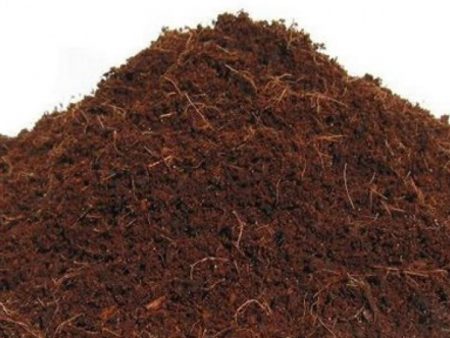
- We open the package with the substrate;
- Dip its contents in a 10-liter container with clean warm water (about 5 liters);
- We wait until the block completely absorbs the liquid and swells (nothing needs to be mixed);
- After 20-30 minutes, the substrate will rapidly "grow";
- Now we cover the container with a plastic bag, and leave it for 2-3 hours;
- The mixture is ready to use for growing peppers!
Coconut mix is absolutely environmentally friendly, easy to use and highly effective. In addition to pepper, it can be used to grow flowers, flowerpots, and other crops. Such a substrate is a 100% guarantee that the seedlings will germinate, grow with powerful roots and will be “strong” and healthy.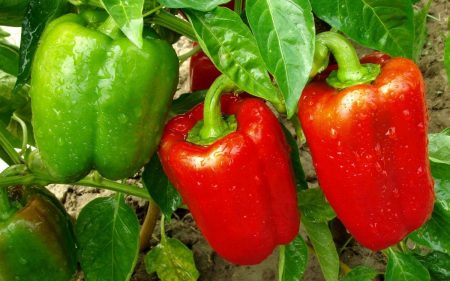
Sowing pepper seeds without soil
Another “diaper” method. It is good because we do not need land for germinating seeds. Its essence is as follows:
- Packs made of polyethylene are carefully cut into strips of 10 cm wide;
- We spread the cut diapers on a flat surface and put strips of toilet paper of the same width on top;
- The shift is planted at a distance of about 3 cm from each other, and 1 cm from the edge;
- On top of the seedlings is covered with the same layer of toilet paper and polyethylene as below. This is necessary to create more “greenhouse” conditions for seeds;
- The ribbons fold up and fold into a small container. Then water is poured into it (edges with seeds should be on top);
- Do not forget to monitor the liquid level, and gradually add water;
- After the first leaves appear on the plant, it can be transplanted into the container in the same way as in the case of diapers with soil.
Reviews
Anastasia Viktorovna, 27 years old, Voronezh
“I use the methods described quite often.From the pros, I can single out: space is greatly saved, the seeds will not dry out, you can visually observe their germination and transplant in time.Most often I sprout without soil - so there will be less “dirty work”. This method is especially relevant for rare varieties of pepper, as the results are visible almost immediately. I recommend for beginners
Anton Vladimirovich, 40 years old, Saratov
“It seems to me that the Moscow style way is the easiest. But, the first time I tried it, for some reason, almost all the seeds did not sprout. The second time everything turned out great. I don’t know what I did wrong, because I fully complied with all the recommendations ”




 Calorie pepper stuffed with meat and rice - BZHU per 100 grams
Calorie pepper stuffed with meat and rice - BZHU per 100 grams Gorky pepper - the best varieties for open ground
Gorky pepper - the best varieties for open ground Hot pepper seeds - the best varieties for open ground and reviews
Hot pepper seeds - the best varieties for open ground and reviews Capsicum tincture for hair - how to use and reviews
Capsicum tincture for hair - how to use and reviews
instructive ..
Misha
Girls who tried to grow seedlings according to the "in diapers" method? Now they write a lot about it. This method is also called "Moscow".
Anna
First, write that the pepper seedlings in the diapers are not stretched (!!!), just below, in a few lines, that the seedlings are stretched and this is a drawback (!!!), you somehow decide whether it is stretched or not ....